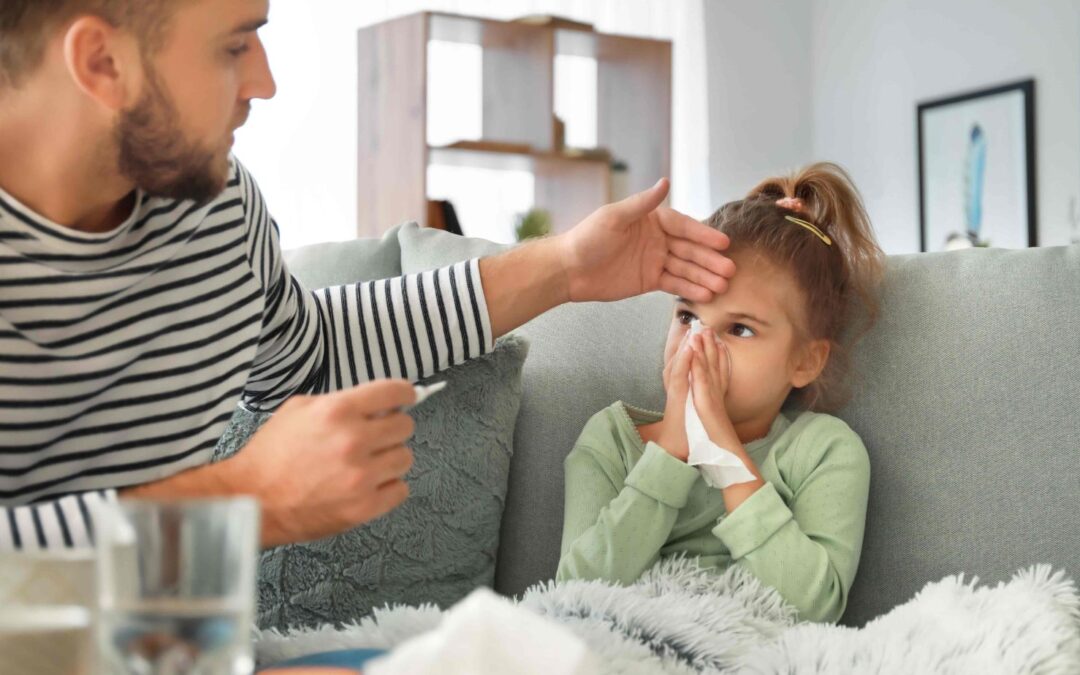Ah, the joys of parenthood! It’s a beautiful journey, filled with precious moments and heartwarming memories. But it isn’t always sunshine and rainbows. There are late-night feedings, endless diaper changes, and the occasional tantrum that tests every ounce of patience. And just when you think you’ve got a handle on things, your little one comes down with a cough or sniffle, and you find yourself navigating the world of respiratory illnesses.
Every parent has been there, frantically googling symptoms at 3 a.m. and wondering if it’s time to call the doctor. This guide is here to help you confidently manage those coughs, sniffles, and everything in between right from the comfort of your own home. It’ll cover the basics of respiratory illnesses, share practical tips for keeping your child comfortable, and help you know when it’s time to seek professional help.
Recognizing Respiratory Illnesses
Alright, it’s time to get down to brass tacks and figure out how to spot those pesky respiratory illnesses in your child. It’s like being a detective, but instead of searching for clues at a crime scene, you’re looking for signs in your child’s behavior and body language.
Here are some common symptoms to keep an eye out for:
- Cough
- Runny nose or congestion
- Fever
- Difficulty breathing or wheezing
- Sore throat
- Body aches
Of course, these symptoms can also be caused by other things, like allergies, but it’s always better to be safe than sorry. Now, it is time to find out “What’s the culprit?” Is it a cold, the flu, bronchiolitis, or something else? It can be tricky to tell the difference sometimes. A cold usually starts with a runny nose and sore throat, while the flu often comes on suddenly with a high fever, chills, and body aches. Bronchiolitis is more common in infants and young children and can cause wheezing and difficulty breathing.
And then there’s COVID-19. If you’re wondering whether your child’s symptoms are due to COVID-19 or another respiratory illness, a test can tell you right away. And if you want to know the difference between PCR vs. Rapid Test for COVID-19 you can visit reputable websites for more information.
Keep a journal or notes on your phone to track your child’s symptoms. This can help you see patterns and determine if they’re getting better or worse.
Essential Home Care Strategies
Now that you’ve got your detective hat on and you’re a pro at identifying those respiratory illness clues, here are some of the things you can do at home to help your child feel better.
First and foremost, make your home a haven for healing:

- Keep the air moist: Use a humidifier or cool-mist vaporizer to loosen mucus and ease congestion.
- Ventilate: Ensure the room is well-ventilated and free of irritants like dust and smoke.
- Hygiene is key: Wash your hands often, encourage your child to cover coughs and sneezes, and disinfect frequently touched surfaces.
- Rest and fluids: Encourage plenty of sleep and offer fluids like water, clear broth, or electrolyte drinks.
Remember, these are just the basics. There are plenty of other things you can do to help them recover faster:
- Saline drops or spray: Clear their nose and help them breathe easier.
- Nasal aspirator: For babies and young children, this can help remove mucus.
- Warm bath: Soothe aches and pains.
These methods can make your child feel more at ease and might even accelerate their recovery.
Preventing the Spread of Illness
When one member of the family gets sick, it often feels like everyone’s bound to catch it. Here are some tried-and-true tactics to keep those respiratory bugs from spreading like wildfire:
- Practice handwashing religiously: Get everyone in the family scrubbing with soap and water for at least 20 seconds (that’s about the length of two “Happy Birthday” songs!). Make it fun for the kids by singing a silly song or having a handwashing contest.
- Teach the “elbow cough”: Teach your little one to cover their mouth and nose with their elbow when they cough or sneeze. It’s a fun way to keep those germs from flying all over the place.
- Disinfect like a cleaning pro: Wipe down those high-touch surfaces (think doorknobs, light switches, remote controls) regularly with disinfectant wipes or spray.
- Social distancing, even at home: If possible, have your sick child stay in their own room to minimize contact with other family members.
- Share the love, not the germs: Avoid sharing cups, utensils, or towels with your sick child. It’s not about being uncaring; it’s about being smart and stopping those germs from entering their tracks.
By following these simple steps, you can create a healthier environment for your family and keep those pesky germs at bay.
When to Consult a Doctor
While home care can work wonders for many respiratory illnesses, there are times when it’s crucial to seek professional help. If your child experiences any of the following, don’t hesitate to reach out to your doctor or pediatrician:
- High fever: Especially in infants under three months old.
- Difficulty breathing: Look for rapid breathing, wheezing, or signs of struggling to get enough air.
- Persistent or worsening symptoms: If your child isn’t improving or their symptoms are getting worse, it’s time to seek medical advice.
- Lethargy or unusual irritability: If your child seems unusually sleepy, weak, or fussy, it could be a sign of a more serious illness.
- Refusal to eat or drink: Dehydration can quickly become a concern in young children, so if they’re not taking in fluids, it’s important to see a doctor.
- Chest pain or abdominal pain: These symptoms could indicate a more serious condition.
- Bluish tint to lips or skin: This is a sign of low oxygen levels and requires immediate medical attention.

Remember, you know your child best. If something doesn’t feel right, trust your instincts and seek professional help.
Final Thoughts
Prioritizing your child’s well-being is paramount, and being an informed and proactive parent can make all the difference in their recovery process. Equip yourself with the resources and support you need to tackle respiratory illnesses head-on, ensuring your little one’s path back to health is as smooth as possible. Explore reputable online resources or consult your healthcare provider to stay informed and prepared for any respiratory concerns that may arise.
My name is Andrea Thompson and I’m a home based freelance writer. I’m 23 years old, married to my best friend, and mother to a wonderfully independent and opinionated 3 year old girl and step-mother to a sweet seven year old boy. I live in a tiny, little town in Kentucky, where I spend my free time fishing with my kids.
Writing has always been my passion, which I followed through high school, and for a while in college. Life happened, and once I discovered we were pregnant, I switched directions; opting for the healthcare industry because of the stability.
Finally, years later, I was in a place where I could leave the day job that never truly made me happy, and pursue my dreams. I’ve built, and am still building, my writing career from scratch. But, I’m passionate and I’m good at what I do. And, in the end, I can prove to my daughter that she can do anything she wants with this life.





